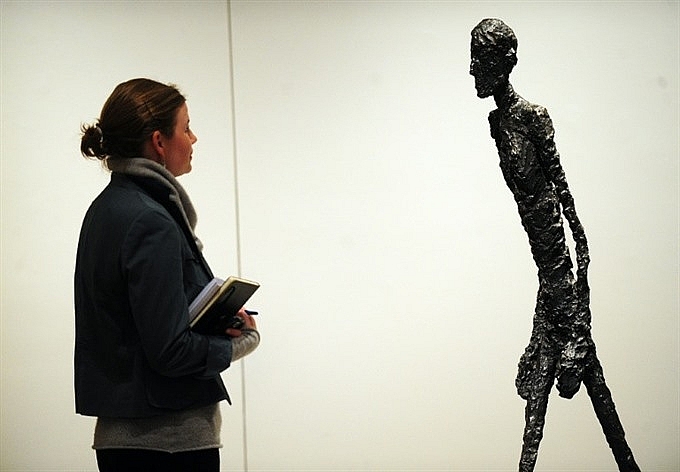Giacometti’s chaotic studio to be recreated in Paris
 |
| Swiss artist Alberto Giacometti created his distinctive spindly figures in a notoriously untidy studio. |
The recreation of the dark and cramped Montparnasse "lair" where he worked for 40 years will be the centrepiece of a new Giacometti Institute, said its directors, who hold the world’s biggest collection of his work, on Monday.
Like his tiny and now almost mythical plaster-covered studio where, as one critic said, artworks "got buried, lost or forgotten, broken up, trampled and ground into nothingness", the institute is relatively modest.
Only 40 people at a time will be allowed into the building, five minutes’ walk from the dark "cave" where Giacometti worked, to see the collection of 350 sculptures and more than 2,000 drawings held by the Giacometti Foundation.
Many of the works, which also include 90 paintings, have never been shown or published before, the foundation said.
Giacometti’s spindly human figures are among the most highly regarded sculptures of the 20th century.
His Man Pointing bronze holds the world record for the most expensive sculpture ever sold at auction: US$141.2 million in 2015.
French photographer Robert Doisneau in the 1950s immortalised the creative chaos of the studio where Giacometti entertained friends and visitors including the writers Samuel Beckett, Jean Genet and Jean-Paul Sartre and the Catalan painter Joan Miro.
It was a painting that Miro gave as a gift to his friend that paid for the institute and research centre, its director Catherine Grenier said.
Painting, 1954 was sold at Sotheby’s in London three years ago for 7.7 million pounds ($13.5 million).
Without that, Grenier said they would have had trouble raising the money for a building to honour the sculptor’s work.
"We have limited resources and we do not have any public subsidy," she added. "There are lots of museums in Paris but we wanted to do something different."
What the stars mean:
★ Poor ★ ★ Promising ★★★ Good ★★★★ Very good ★★★★★ Exceptional
Related Contents
Latest News
More News
- Free tickets, Lunar New Year promotions on offer at Vietjet Mega Livestream (November 26, 2025 | 15:32)
- UNIQLO unveils upgraded heat-retention wear at Hanoi event (October 26, 2025 | 10:00)
- Vietnam named among world’s top four culinary destinations (October 24, 2025 | 17:09)
- Vietnam and Denmark strengthen dialogue on sustainable fashion (October 20, 2025 | 09:11)
- Fusion rolls out special initiatives to celebrate Vietnamese Women’s Day (October 17, 2025 | 20:00)
- Showcase AC 2025 set to light up Hanoi stage (September 12, 2025 | 18:06)
- Hotel Indigo Saigon The City hosts event to reimagine city’s beloved alleyways (July 23, 2025 | 17:04)
- UNIQLO’s sustainability strategy behind the brand's global growth (June 23, 2025 | 15:42)
- Vietnam International Travel Mart 2025 kicks-off in Hanoi (April 10, 2025 | 17:50)
- Phu Quoc named as one of Asia's 'Best Islands' (March 13, 2025 | 10:24)

 Tag:
Tag:


























 Mobile Version
Mobile Version